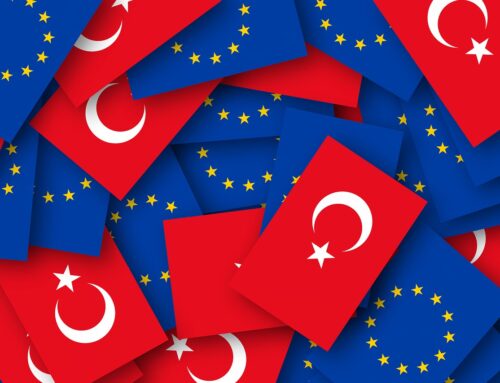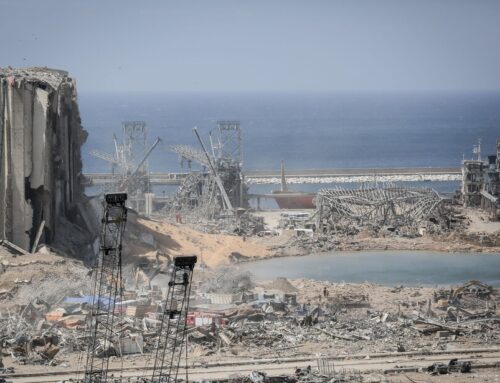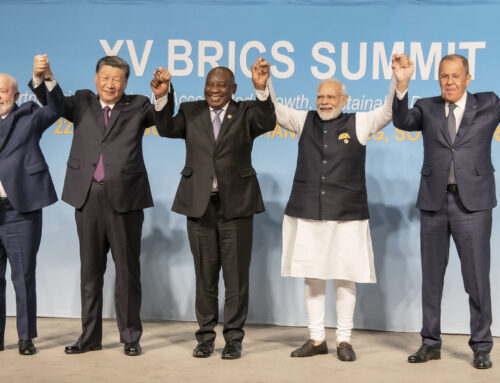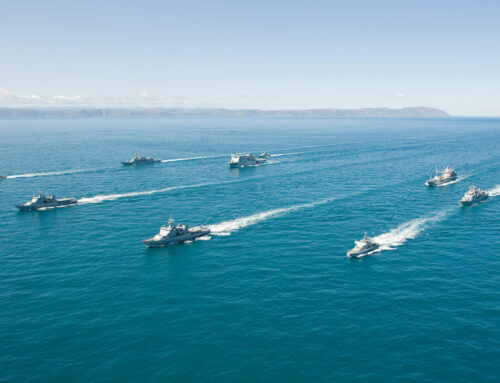Autor foto: ВО Свобода
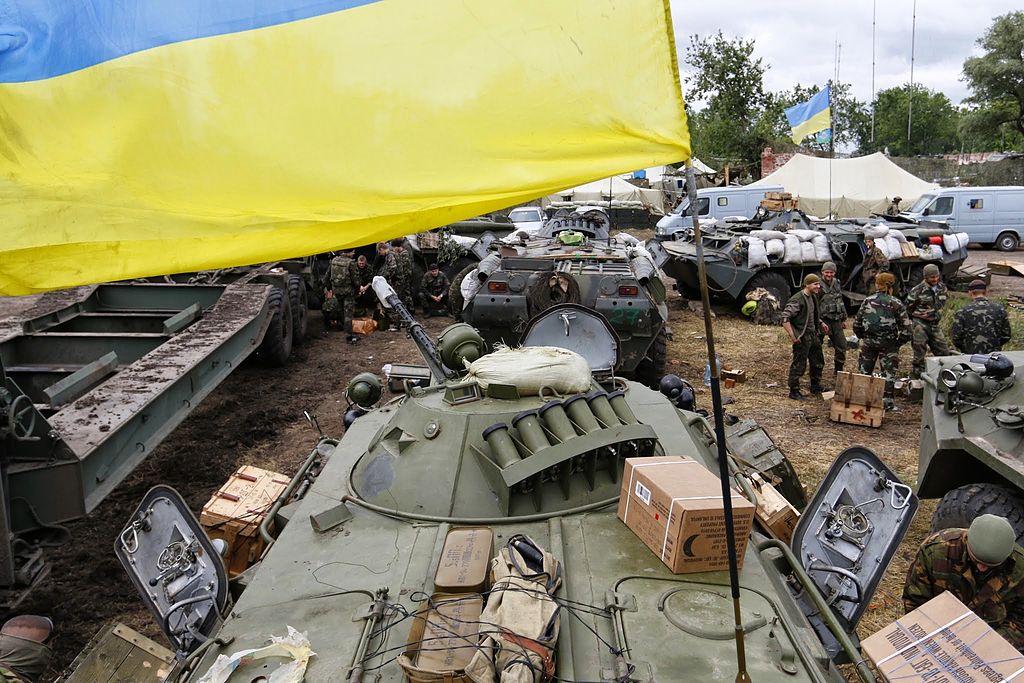
Implementation of Minsk II
July 16, 2015
Author: Wojciech Łysek



Autor foto: ВО Свобода
Implementation of Minsk II
Author: Wojciech Łysek
Published: July 16, 2015
The negotiations completed on February 12, 2015, between the leaders of France, Germany, Russia and Ukraine (the so-called ‘Normandy format’) led to the signing of the Minsk II agreement. They assumed a truce, effective from February 15, the withdrawal of heavy weapons within fourteen days from that date, the establishment of a buffer zone as well as foreign units leaving the territory of Ukraine. The Organization for Security and Cooperation in Europe (OSCE) has been observing the implementation of the ceasefire. Kiev also pledged to implement legislation regarding the fixing of systemic issues, and both sides were to exchange prisoners and unlawfully detained, and to establish a mechanism ensuring humanitarian aid to the Donbass.
Violated truce
According to Ukrainian authorities, between February 15-17, 2015, the so-called separatists fired at Ukrainian troops 164 times. The Prime Minister of Ukraine, Arseniy Yatsenyuk, said that by April 2, 2015, 75 soldiers had been killed and more than 400 injured. The head of the OSCE monitoring mission, Alexander Hug admitted on the same day that fights were taking place all the time. At the beginning of May 2015, the number of Ukrainian soldiers killed increased to 100.
The most serious violation of the ceasefire was the takingover of the Debaltsevo communication junction on February 18, 2015 by the so-called separatists. The case of Stanica near Luhansk also raised controversies, where Russians crossed the Siverskyi Donets, as the Ukrainian soldiers did not manage to guard it. The authorities ordered to cease active defence, so as not to break the terms of the agreement, and the officers showed naivety turning to the so-called rebels with a request to withdraw. Shyrokyne – a town located east of Mariupol – (the biggest port of the Donetsk oblast) has become a symbol. OSCE intervention on March 26, 2015, interrupted the ongoing fights in this region. Also during the Orthodox Easter near Shyrokyne OSCE representatives noted gunshots coming from tanks and mortars from the Ukrainian side. At the beginning of May 2015, fighting erupted in the village of Maryinka (western outskirts of Donetsk), and its intensity increased at the beginning of June. In early June 2015, 80 breaches of the ceasefire were noted only in the region of Luhansk, committed by the Ukrainian side.
Withdrawal of heavy equipment
Both sides have not complied with the terms regarding heavy equipment. Already in February 2015, the Ukrainian army refused to withdraw the weapons, if a truce was not to be respected. Five days after the deadline, the representative of the anti-terrorist operation unit Anatoly Stelmach announced the completion of the last stage of withdrawal of Uragan rocket launcher and BM-21 Grad, anti-tank cannons and ‘Akatsiya’ self-propelled guns. The so-called separatists and Russia accused the Ukrainian army of using 122 mm howitzers in the vicinity of Shyrokyne. According to Alexander Zakharchenko, the event took place on April 15-16, 2015. The so-called separatists believed that the battalions of volunteers were used for this purpose instead of regular units of the Ukrainian armed forces. In recent months, the OSCE Special Monitoring Mission has obtained evidence to confirm these reports. On March 6, 2015, its representatives noticed an unmarked Ukrainian convoy with 15 Uragan systems three kilometers behind the front line. It was not until May 7, 2015, when the OSCE mission confirmed the suspicion about the continuing use of Uragan rocket launchers. Since the beginning of June 2015 Ukrainians have been shelling residential areas of Donetsk, and fights have been conducted from Maryianka through Pisky to Gorlovka.
Ukrainian activities are primarily defensive in nature and result from the fact that the so-called separatists do not comply with the provisions of the truce. A spokesman for the National Security and Defense Council of Ukraine reported on February 27, 2015, that a convoy transporting Grad rocket launchers was found heading in the direction of Mariupol. In turn, on March 23, 2015, the Ministry of Internal Affairs of Ukraine issued a statement on Russian tanks in Gorlovka. According to the ‘Informacionnyj Otpor’, the so-called separatists left from 10 to 15 percent of heavy equipment in a short distance from the front, so that it could get back within 30-40 minutes. This thesis is confirmed by a swift use of heavy equipment by the so-called separatists after Ukrainians had started shelling the area in the vicinity of Luhansk.
Imprecision and inefficiency
The Minsk II agreement contains ambiguities. One of the entries assumes a withdrawal of foreign units from Ukraine. The West and Kiev authorities meant Russian soldiers (Ukrainian reports from the end of March 2015 point at 22 tanks and 800 Russian mercenaries). However, according to Daniel McAdams from the Ron Pol Institute for Peace and Prosperity, US military (such as the units which arrived for semi-annual maneuvers to Yavoriv near Lviv) also does not have the right to station on the territory of Ukraine. Shifting of Russian 138 Motorized Brigade and 25 Spetsnaz Regiment in the vicinity of Debaltseve and Mariupol have also violated the Minsk agreements.
The entry on releasing prisoners and those held in unlawful custody has not been fully completed. Although the exchanges have taken place (e.g. on February 21, 2015), this process has not been completed. The so-called separatists explain that Ukraine requires comprehensive data on prisoners and detainees. In contrast, Kiev’s representative in the international ‘contact group’ for the crisis in Ukraine (OSCE, Ukraine, Russia), Leonid Kuchma, reminded on April 1, 2015, that the principle of ‘all for all’ is in force.
The case of Nadia Savchenko raises particular controversies (in June 2014 she was taken prisoner by the so-called separatists in the area Gorlovka, and a month later she was placed in custody in Voronezh). On July 1, 2015, a court in Moscow once again extended the detention until September 30, 2015, and already in February Western decision makers bound this case with sanctions. The lawyer of the detained announced on April 24, 2015, that Savchenko was presented with a new charge: ‘illegally crossing the Ukrainian-Russian border’ and this information was confirmed by a spokesman for the Russian Investigative Committee. Russian Foreign Minister Sergei Lavrov admitted that the lieutenant could fall under the privilege of amnesty, but first the court must take a position here. The case of prisoners is also linked to a report by Amnesty International (AI) about the alleged executions. The documents show the situation of soldiers captured in Debaltseve. According to AI the captured people were tortured and killed. These reports are confirmed by the accused. A mercenary soldier ‘Motorola’, fighting for the so-called separatist, confessed to shooting 15 Ukrainian prisoners.
Society vs. the war
As a result of the conflict more than a million people in Ukraine had to leave their homes. Two-thirds are women. According to the UN, the conflict has brought nearly 6,500 casualties among civilians, and nearly 16,000 wounded. The so-called separatists informed that in the area, they control, more than 3,000 people have been killed. According to data from the Russian Ombudsman for Children, approximately 200 children have been killed in the conflict so far. However, according to UN High Commissioner for Refugees’ report from April 2, 2015, 777,000 residents of eastern Ukraine left their homes. Most of them have gone to Russia. 1.2 million internally displaced persons from the Donbass were officially registered in Ukraine at the end of March 2015.
The decisions made by the Ukrainian authorities in domestic politics remain problematic. The agreements concerning systemic changes are done slowly. President Petro Poroshenko on March 3, 2015, appointed a committee for changes to the constitution. Judging by the statements of decision makers, Kiev is leaning toward decentralization and not federalization. Talks with the representatives of the rebel regions have still not begun. On March 17, 2015, the Verkhovna Rada amended the law on the special status of Donbass, thus violating the agreement of February 2015 because the autonomy will be given only after the local elections and removal of illegal armed groups. Parliament has established a list of towns in the Donetsk and Luhansk oblasts, which may be given a special status. According to the Russian side, it is another of Kiev’s ‘tricks.’
In mid-April 2015 Lavrov described the so-called de-communising package and the law glorifying nationalists as ruinous for the peace process. According to the Russian Foreign Ministry, the adoption by Ukraine of the laws that prohibit popularizing of communism, among others, revalues its history and leads to a deep split in the society.
Assessment of the situation
On March 15, 2015, President Poroshenko in an interview for Bild criticized the state of the Minsk agreement. He said that it was more ‘hope than reality.’ He blamed the so-called separatists of rejecting the access for the OSCE mission to the areas they control, hence the appeal to the EU and the United States to support the monitoring of the Minsk arrangement. The President wanted the peacekeeping mission to separate the two sides and secure the border, and the OSCE would verify the fulfillment of the agreement. Poroshenko admitted that the partners expressed negative responses to that proposal.
In mid-April 2015 Russia’s representative Andrei Kielin blamed Kiev for deliberately obstructing the activities of the OSCE mission and not presenting candidates to the ‘contact group’. On the other hand, after the ‘Normandy format’ talks Lavrov drew attention to the blockade of Donbass, which he described as harmful to the Minsk agreement. According to Vladimir Putin, it would be Kiev, not Russia that would be responsible for rebuilding infrastructure in the east of Ukraine. According to Russian sources, since August 2014 more than 25,000 tons of aid has been sent for the population of Donbass in humanitarian convoys. However, the so-called separatists have received missiles for Grad launchers also within the ‘humanitarian aid’.
At the beginning of April 2015 a representative of the OSCE Mission A. Hug said that it is necessary to secure access to the entire area of the conflict. Observers use drones, but the devices are useless when weapons are hidden ‘in barns or factory premises’. On April 12, 2015, before the meeting in the ‘Normandy format’, German Foreign Minister Frank-Walter Steinmeier appealed to Russia and Ukraine for the transition to ‘next phase of the agreement’, expecting that the parties will work on ‘preparing local elections, as well as securing access to humanitarian aid and reconstruction of eastern Ukraine.’ Futility of the ceasefire was noticed by all foreign ministers participating in the ‘Normandy format’ talks on 14-15 April. They called for ending the fights, the withdrawal of heavy equipment, as well as smaller caliber weapons.
So far the actions of the ‘contact group’ remain fruitless. At one recent meeting, held on June 3, 2015, subgroups for political and security issues only presented their positions. Heidi Tagliavini, at that time representing the OSCE in Minsk, diplomatically stated that ‘decisions in all these matters are not taken quickly.’
It is hard to expect the fulfillment of the entry on the armed forces of Ukraine taking control of the Ukrainian-Russian border, which is to take place by the end of 2015. In particular that Russia has denied the presence of their troops in the Donbass. The situation remains unstable. This is demonstrated by shootings on the border with Transnistria, and more and more frequent rumors about concentration of the Ukrainian armed forces in the border region. At the same time, the information and propaganda war has been waged, as a result of which, among others, information has appeared about the possible attack of Russia from the east or from Belarus.
Conclusions and recommendations for the EU and Poland
- The ceasefire, concluded on February 12, 2015, has not been implemented, and its supervision remains inefficient. Both parties are focused on blaming the opponent for breaking the ceasefire instead of maintaining it. Exchange of fire in Shyrokyne even during Easter showed the weakness of the Minsk agreement. From the perspective of 130 days one must assume that low-intensity fights will be continued.
- The passing of time strengthens the provisional status quo. The fulfillment of the Minsk agreements gives the so-called separatists a semblance of subjectivity, which simultaneously strengthens them. In turn, the lack of implementation of the Minsk agreement allows Moscow to blame Kiev. These were Ukrainians who were convinced to a number of medium and long-term activities, such as, among others, reforming the Constitution with respect to the amount of power for the regions or transformation of the rebel forces into the local militia. At the same time, the Ukrainian government has been saddled with expenses, e.g. social benefits which are not paid, which strengthens the so-called separatist authorities.
- Incentives for Ukraine are: an unclear prospect of regaining control at the border with Russia and maintaining power over the Donbass. Due to the prolonged conflict, which is characterized by devastating position fighting, regaining the control over the two circuits may become extremely expensive for Kiev.
- If Russia remains the initiator, the most intense battles will take place around Mariupol, because the Kremlin aims to connect to the Crimea. In turn, the Ukrainians seek to recover the key city in the region, namely Donetsk.
- In Moscow the opinion dominates about the completion of the most active phase of the fighting. Especially that further action may prove too costly for the political elite because of the attitude of the society to the conflict. The chances of its ‘freezing’, i.e. establishing the ‘Transnistria model’ have been increasing. In this way, Russia secures minimal success in the form of blocking Euro-Atlantic aspirations of Kiev, while it does not incur the costs of rebuilding the destroyed region.
- There are signs that Ukraine will not be able to clearly win this conflict militarily. Kiev is looking for success in diplomacy, at the same time showing the international community Ukraine’s ability to resist aggression. The attitude of the West is a key element of this strategy.
- )With the advent of truce Ukraine’s future will depend on how economic and political reforms will be carried out, and whether the level of social discontent will lead to the destabilization of political life. Particularly important will be reducing the influence of the oligarchs on political and economic life, the acceleration of the fight against corruption and reform of the judiciary and the police. In this respect, the European Union should play a positive role here.
- If conflict management exceeds the capacity of the Ukrainian political class and the cost of the war persists (from 5 to 7 million euros daily), the process of economic and political transformation will not be successful. In an extreme case it may lead to increased migration of citizens, for example, to Poland.
Author: Wojciech Łysek, PhD student at the Jagiellonian University in Krakow


